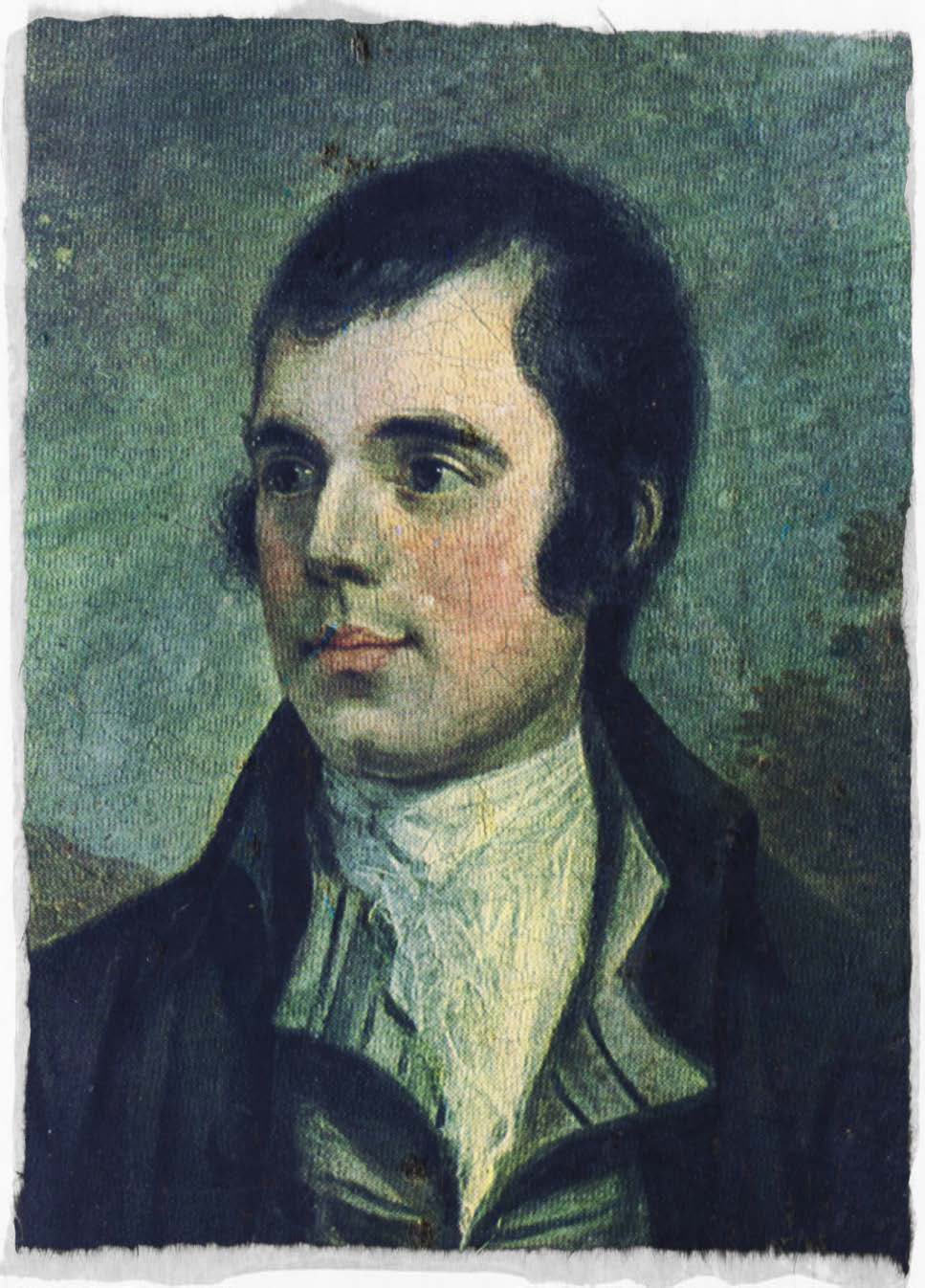Burns Night is a recognition of the life and poetry of Robert Burns (January 25, 1759 – July 21, 1796), Scotland’s National Bard and the author of many Scots poems and songs. The day is typically celebrated with a Burns Supper on or near the poet’s birthday, with most celebrations being held this year on Friday, January 25th or Saturday, January 26th.
Robert Burns’ Life and Legacy
Born in Alloway, Scotland, on January 25, 1759, Robert Burns was the first of William and Agnes Burnes’ seven children. His father, a tenant farmer, educated his children at home. Burns also attended one year of mathematics schooling and, between 1765 and 1768, he attended an “adventure” school established by his father and John Murdock. His father died in bankruptcy in 1784, and Burns and his brother Gilbert took over the farm. This hard labor later contributed to the heart trouble that Burns’ suffered as an adult.
At the age of fifteen, he fell in love and shortly thereafter he wrote his first poem. As a young man, Burns pursued both love and poetry with uncommon zeal. In 1785, he fathered the first of his fourteen children. His biographer, DeLancey Ferguson, had said, “it was not so much that he was conspicuously sinful as that he sinned conspicuously.” Between 1784 and 1785, Burns also wrote many of the poems collected in his first book, Poems, Chiefly in the Scottish Dialect, which was printed in 1786 and paid for by subscriptions. This collection was an immediate success and Burns was celebrated throughout England and Scotland as a great “peasant-poet.”
In 1788, he and his wife, Jean Armour, settled in Ellisland, where Burns was given a commission as an excise officer. He also began to assist James Johnson in collecting folk songs for an anthology entitled The Scots Musical Museum. Burns’ spent the final twelve years of his life editing and imitating traditional folk songs for this volume and for Select Collection of Original Scottish Airs. These volumes were essential in preserving parts of Scotland’s cultural heritage and include such well-known songs as “My Luve is Like a Red Red Rose” and “Auld Land Syne.” Robert Burns died from heart disease at the age of thirty-seven. On the day of his death, Jean Armour gave birth to his last son, Maxwell.
Most of Burns’ poems were written in Scots. They document and celebrate traditional Scottish culture, expressions of farm life, and class and religious distinctions. Burns wrote in a variety of forms: epistles to friends, ballads, and songs. His best-known poem is the mock-heroic Tam o’ Shanter. He is also well known for the over three hundred songs he wrote which celebrate love, friendship, work, and drink with often hilarious and tender sympathy. Burns died on July 21, 1796, at the age of 37. Even today, he is often referred to as the National Bard of Scotland.
A Burns Supper
The first Burns Night was held on July 21, 1801 on the fifth anniversary of his death. A group of merchants, some of whom had known Burns, held the next Burns supper on January 29th 1802 thinking that it was his birthday, but the following year moved the event to January 25th in 1803 when parish records revealed that to be his actual birthday. Since then, suppers have been held every year since on or about January 25th. The number of Burns clubs has grown to hundreds and many other groups such as St. Andrews Societies also hold Burns Suppers.
Suppers may be formal or informal depending on the individual club hosting but almost always feature bagpipes, kilts, and haggis. A formal Burns supper follows a specific order of events.
Once the guests are piped in, the host gives a welcoming speech which is followed by the reciting of the Selkirk Grace. The meal then begins with a soup course. The main course is invariably haggis – the haggis itself is usually marched in with a piper and an honor guard (armed with swords). Then the host or a guest delivers the “Address to a Haggis,” another famous Burns poem which extolls the noble nature of the Scottish delicacy. (I still have all 8 stanzas of this poem memorized for an event from a couple of years ago.) A whisky toast follows the address and then the haggis is served, traditionally with neeps and tatties (mashed turnips and mashed potatoes).
Dessert is followed by a number of speakers. The host will begin with a reflection on some part of Burns’ life or legacy which is sometimes serious and often humorous. Next comes the Address to the Lassies which is an amusing but non-offensive discussion where the speaker gives his view on women, followed by a toast to the women present. Not to be outdone, a woman comes next with the Reply or Address to the Laddies where she gives her view on men and also rebuts the previous address. These two speakers will sometimes collaborate on their speeches in order to add to the fun. After the speeches, more of Burns’ songs or poems are performed. The evening usually ends with guests joining hands to sing Burns’ most famous work, “Auld Lang Syne.”
.
.
